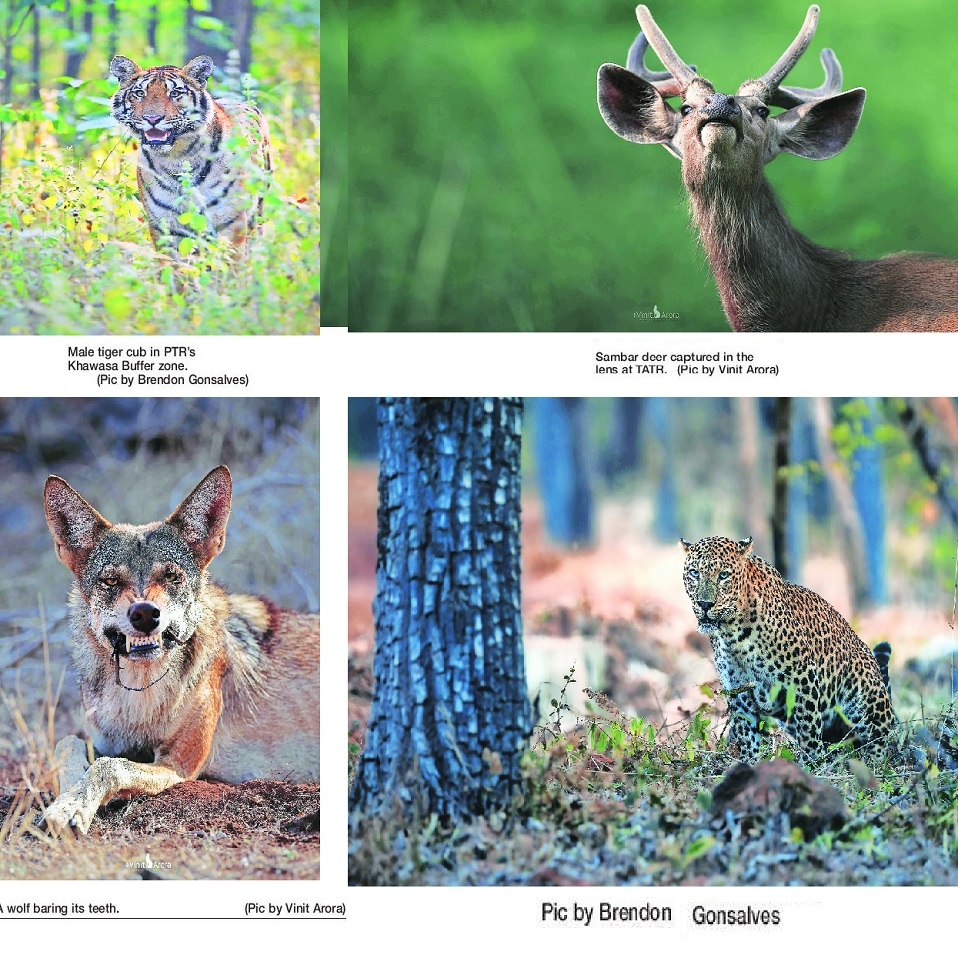world wildlife conservation day Pench, Tadoba National Parks adopt digital tools for wildlife conservation
04 Dec 2024 11:39:27

By Pearl Prasad :
‘Bagheera’ descends from Rudyard Kipling’s ‘Jungle book’ and keeps an eye on how you move in the forest, of course, in your vehicles. You speed up, and he steps in to caution you. So, you remain in check, in tune with the law of the jungle---and the rules of the Forest Department.
But wait! This ‘Bagheera’ is not a friendly animal from the Kipling fiction; he is a digital application introduced by the Forest administration in Tadoba Andhari Tiger Reserve.
Pench and Tadoba National Parks of Central India have adopted various digital tools for strategic conservation of our wildlife.
The digital tools include, Satellite imaging, Artifical Intelligence
systems and GPS tracking devices. Forest authorities are celebrating how digital technologies have
revolutionised wildlife conservation efforts. These tools are key players in combating illegal poaching, monitoring endangered species, and tracking human-animal conflicts.
This time around, the theme for World Wildlife Conservation Day is centered at ‘Digital Innovation and the Connection Between Humans and Nature.’ The idea highlights the amalgamation of digital advancements and interdependence of humans and nature in the ecological cycle.
The Hitavada spoke to the Deputy Director of Pench Maharashtra, Prabhu Nath Shukla. He said that over the past couple of months, their department has incorporated “AI-based human-wildlife monitoring systems.” Initially, it started as a pilot project but has grown into six separate units now. This system aims at close supervision of human-wildlife activity. The mechanism of this system enables villagers to be alerted about tiger movement in nearby proximity, to avoid any form of calamity.
He added that Pench Maharashtra has also utilised AI technology for the purpose of fire management too. Satellite towers are set up and control rooms scan the data provided by the satellite signals. The authorities are now able to detect possible forest fires and weather forecasts as well. Pench Maharashtra has also developed an application called “Tiger monitoring”. As the name suggests, the app makes it
easier to track tiger movement, distinguish between territorial tiger boundaries, collect evidence for arrival of new tiger and disappearance of old ones, Shukla said. Furthermore, Deputy Director of Tadoba Tiger Andhari Reserve; Piyusha Jagdap said, that even Tadoba has adopted AI-based monitoring devices. Tadoba authorities have devised an application called ‘Bagheera’, a GPS tracking system, that tracks Safari vehicles.
The App was established in 2020 but it was only restricted to the core area of the forest. Since the past few months , the app is also being used for the buffer area safari’s too. “The application keeps an eye on over-speeding of gypsies, route distractions, long halts and any other form of safari violation,” Piyusha added.
Additionally, IFS Dr Sanjay Shukla, who is currently serving as a Member Secretary, Central Zoo Authority and Additional Director of Wildlife Crime Control Bureau and overarchingly a conservationist, believes new strategies could be incorporated for attainment of smarter conservation goals. He said, development of standardised protocols for data collection and integration of data sources into a unified system can eliminate fragmented and inconsisitent data across regions and species. He further suggested that, International collaborations can enhance cutting-edge conservation technologies. Enhancing biodiversity databases regularly for comprehensive conservation planning will open new learning horizons for researchers and policy makers he added. By addressing these loopholes, we can create more effective and resilient conservation strategies, Dr Shukla added.
The day reminds us to save and serve our future generations with sufficient, sustainable wildlife. This day rejuvenates the idea of fostering a deeper connection with our natural surroundings. It is not just the bestowed right of our forest guards to protect the confines of our green pastures but an undervalued responsibility of each individual to commit towards the long and healthy life of our wildlife. This collective duty can ensure a seamless generational transition.